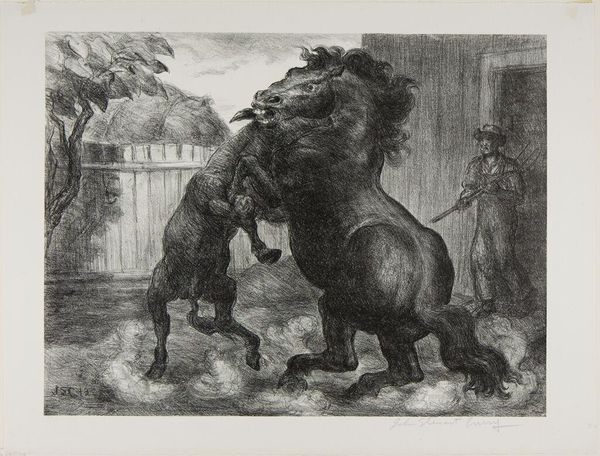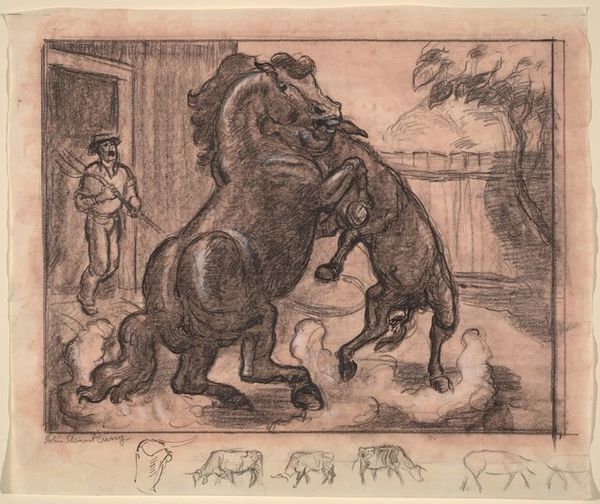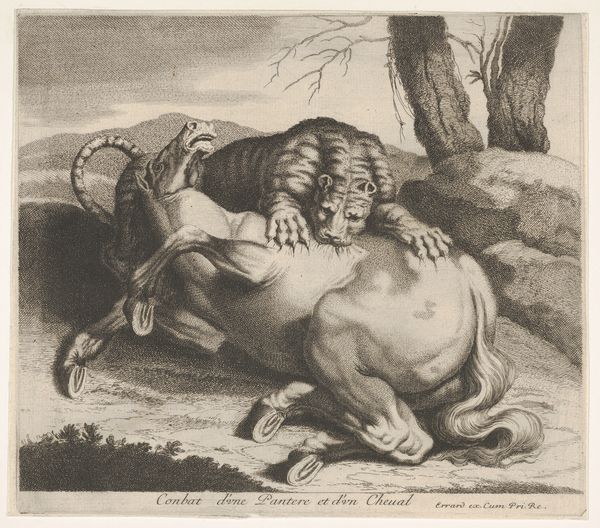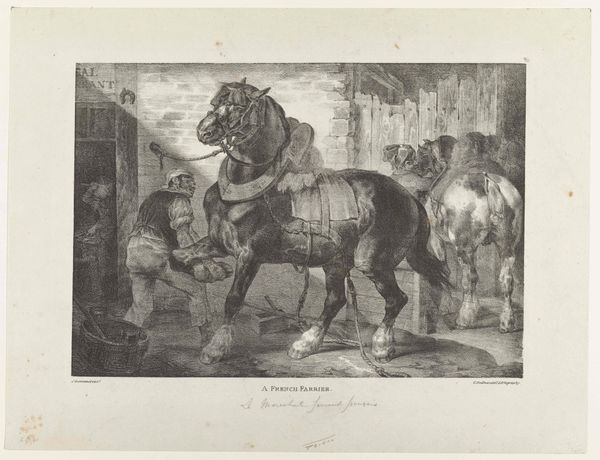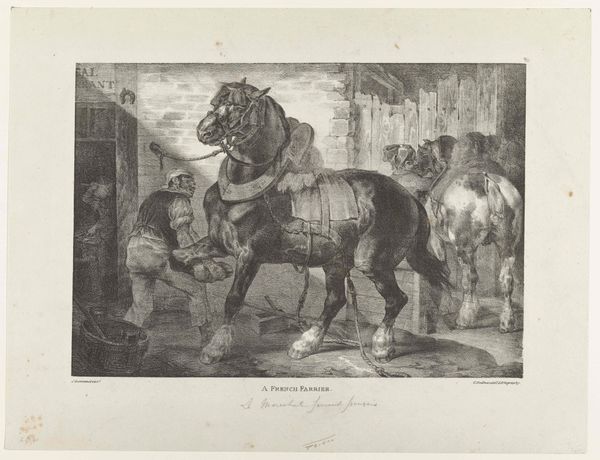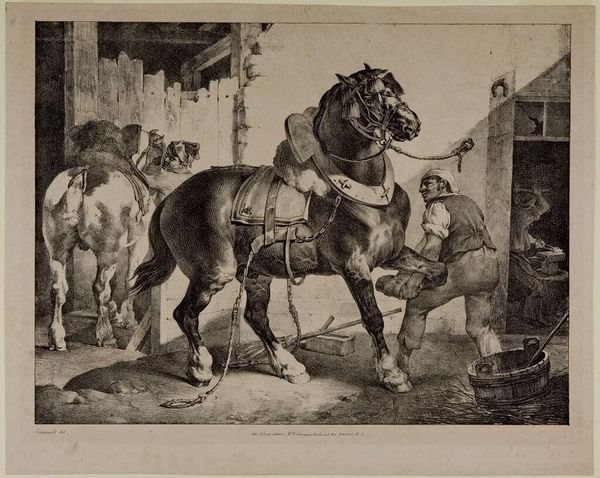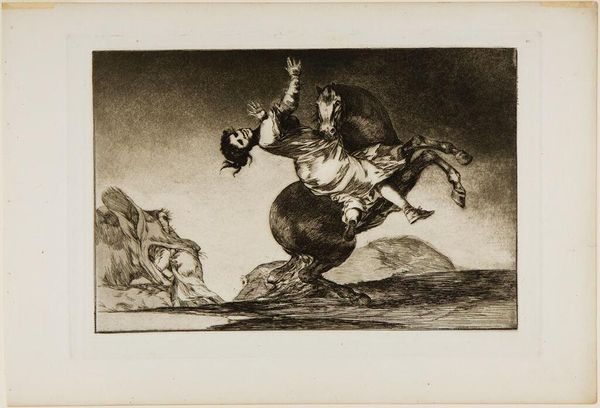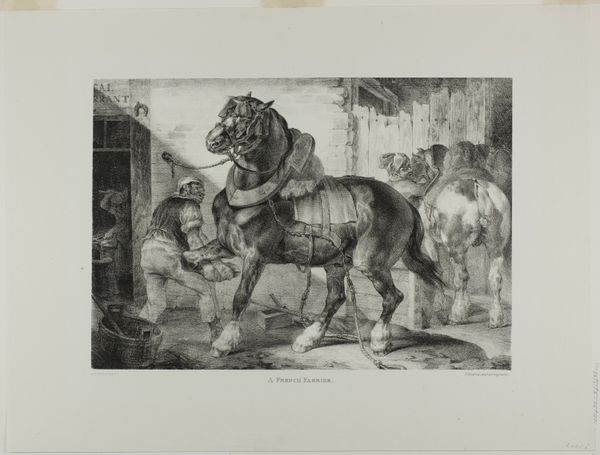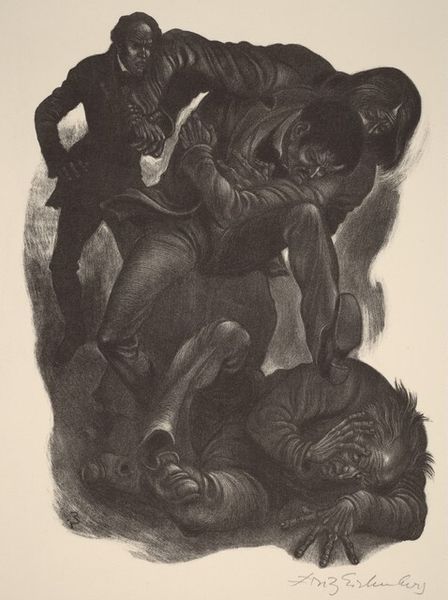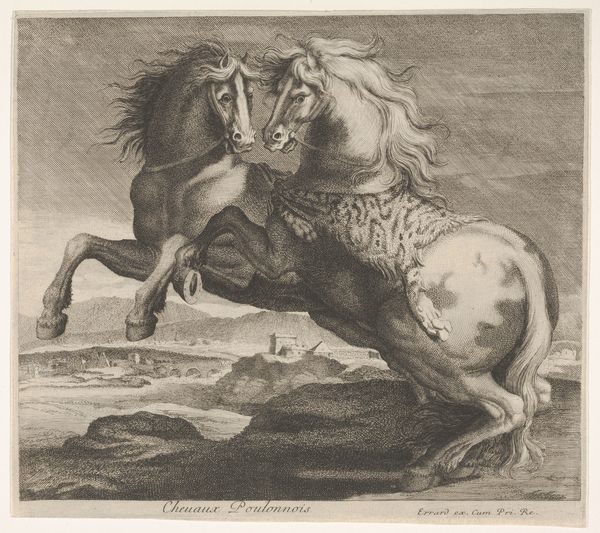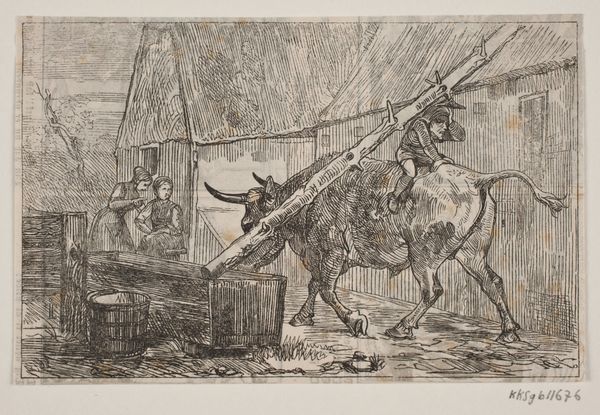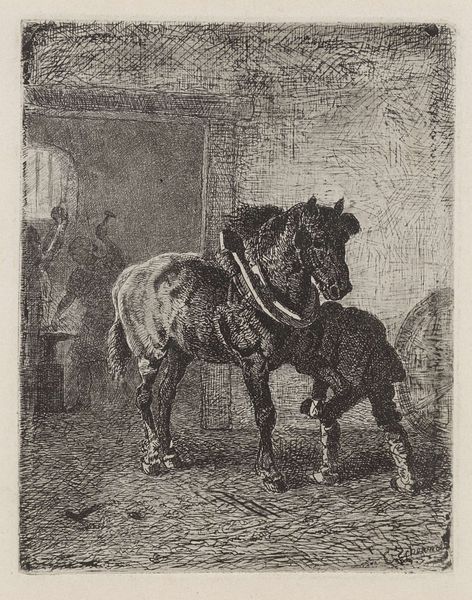
lithograph, print, etching
#
lithograph
# print
#
etching
#
landscape
#
history-painting
#
realism
Dimensions: 11 7/8 x 15 9/16 in. (30.16 x 39.53 cm) (image)14 3/16 x 19 1/4 in. (36.04 x 48.9 cm) (sheet)
Copyright: No Copyright - United States
John Steuart Curry created "Stallion and Jack Fighting" as an etching, a printmaking technique that uses acid to cut into a metal plate. Curry was part of the Regionalist movement, which sought to represent rural American life, particularly of the Midwest, and to validate the experiences of ordinary people. Here, Curry depicts two male animals locked in a fierce struggle, their muscles tense and eyes wild, while a man stands guard with a rifle. The scene is full of raw emotion and primal energy. The fight between the animals could be interpreted as a metaphor for human struggles and conflicts, reflecting the anxieties and tensions of the time, which included the Great Depression and the lead-up to World War II. Curry spent much of his life rendering the land, people and animals he knew so well. These depictions were, in his words, a way to, "express the feelings of the common people." While on the surface it’s a depiction of animals fighting, it also symbolizes universal themes of struggle and survival.
Comments
minneapolisinstituteofart almost 2 years ago
⋮
John Steuart Curry was a leading proponent of Regionalism, a movement of modern artists who found inspiration in rural and small-town America. In line with this populist approach, Curry often re-created his oil paintings as black-and-white lithographs that were issued in large editions and priced for middle-class customers. In 1932, he painted Stallion and Jack Fighting, in which a powerful, glistening horse tangles with a gaunt mule. Deciding this subject would have wide appeal, he set about reducing and refining the image, as seen in his drawing made on tracing paper (Mia 2009.48.1). He started with erasable pencil and then marked his final ideas in ink. In 1943, he elaborated the image once again, drawing with a greasy crayon on a lithographic stone. The stone was then used to print the image, reversing the composition.
Join the conversation
Join millions of artists and users on Artera today and experience the ultimate creative platform.
